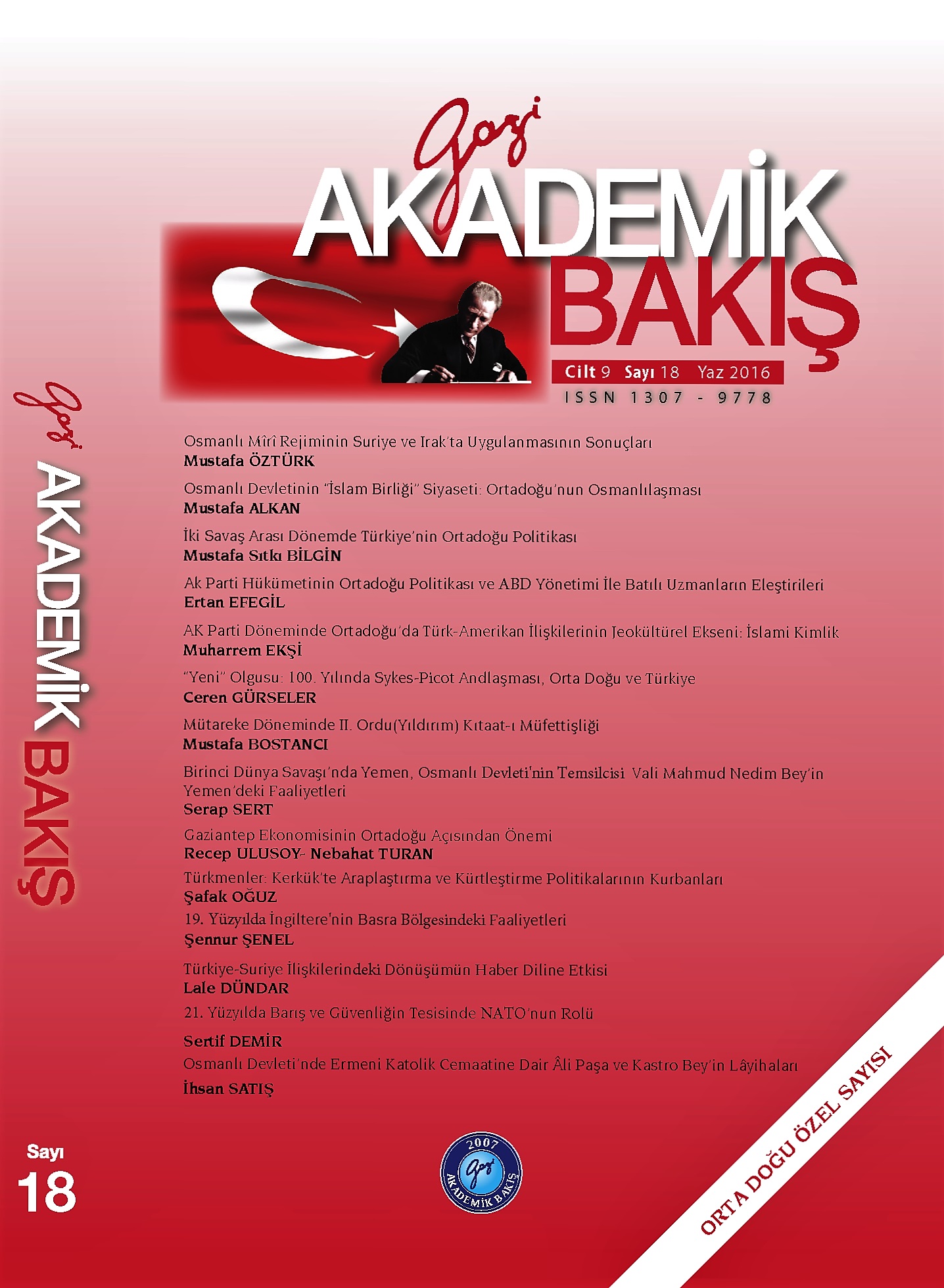Osmanlı Mîrî Rejiminin Suriye ve Irak’ta Uygulanmasının Sonuçları
Implementation and Results of Ottoman Mîrî System
on Syria and Iraq
Author(s): Mustafa ÖztürkSubject(s): Economy, Geography, Regional studies, Economic history, The Ottoman Empire
Published by: Gazi Akademik Bakış
Keywords: Ottoman; Formal System; Syria and Iraq; Annual System; Classic System;
Summary/Abstract: Ottoman State has two fundamental types of administration. 1. Formal System, 2. Annual System. There are also privileged provinces except for these. Formal Regime is a classic system of the State. Census is conducted, income is granted in these provinces which are included in these systems. Officials who are the users of national sources, are also responsible for executing of the national service. In this way, State can recruit soldiers, collect taxes and substitute the dominant culture in these provinces. As for the provinces directed with the Annual Systems there is no census and recruiting soldiers. As it is stated in the Legal Code (Rule book) governors and other officials were paid from the sources of these provinces. But if financial records are analyzed, it is observed that these governors were paid by the State, too. Ottoman State certainly control these provinces which are included these regimes. Acoording to these information, The Formal System’s borders; Damascus, Raqqa, Baghdad, Tabriz in the South, Revan and Batum in the North. Under the condition that Danube River is a natural border, Bulgaria, Macedonia, Bosnia and Herzegovina, Albania, Northern Greece, Dodecanese, Rhodes in Saros Bay and Cyprus in Rumelia. Our subject is especially the Northern parts of Syria and Iraq, that is Damascus, Aleppo, Raqqa, Deyr-i Zor, all parts of of Mossul provinces including Mossul, Kirkuk, Suleimanieh, Erbil Dohuk. Baghdad was sometimes included Formal System sometimes ruled with Annual System, too. These administrative and economic system ensured the integration of local community with the State throughout the centuries. Because hundreds of thousands of people cultivated timar and zeamet (parts of Formal Regime) hundreds of thousands of people were employed in Muqataa and Foundation. The most important factor of this unification is that the Ottoman State had no concern with interfering the life of religious and social life of local community and these people were mostly Muslims. These socio-economic order, continued for centuries, resulted in the support of the local people after The First World War in favor of the Ottoman State. Eventually, this togetherness gave the National Oath a ground without practising any favoritism as Turcs, Kurds, Arabs.
Journal: Gazi Akademik Bakış
- Issue Year: 09/2016
- Issue No: 18
- Page Range: 1-15
- Page Count: 15
- Language: Turkish

